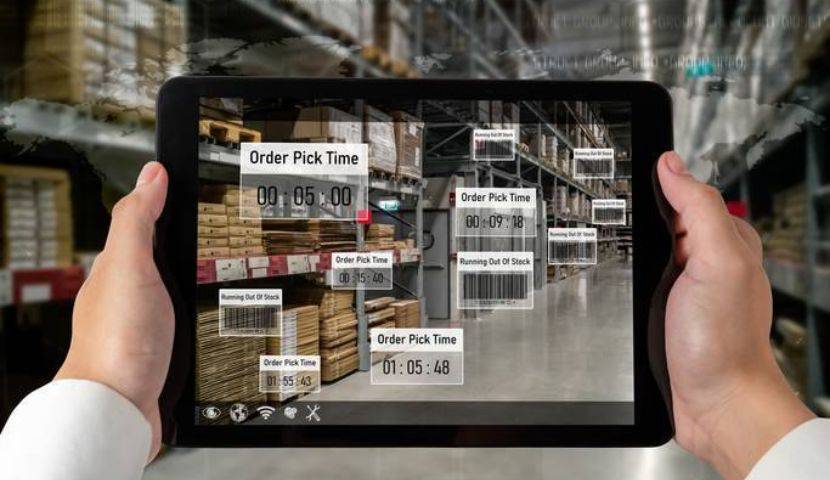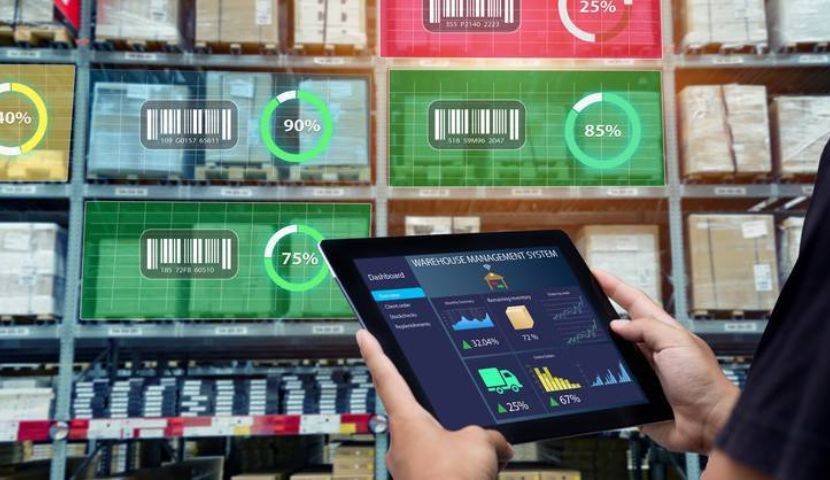Unlocking the Power of Warehouse Digitalization: Exploring the Costs and Benefits
While digitalization promises to streamline operations and boost productivity, it’s important to understand the costs involved and assess warehouse digitalization cost before embarking on this journey.

How to Choose a WMS
The Road to Digital Transformation
In today’s rapidly evolving world, digitalization has become a key buzzword across industries. From transforming supply chain operations to optimizing customer experiences, businesses are embracing technological advancements to stay competitive. So, it’s no surprise that digitalization is making its way to warehouse settings as well.
Embracing digitalization in a warehouse setting involves implementing cutting-edge technologies to automate warehouse processes, improve efficiency, and gain real-time insights. From advanced inventory management systems or full warehouse management systems, to ERP, robotics and Internet of Things (IoT) devices, the possibilities are vast.
But, before diving headfirst into this exciting new territory, it’s essential to consider the cost implications of implementing cutting-edge technologies to optimize warehouse operations. In this blog post, we’ll explore the investment required to embrace digitalization in a warehouse and weigh whether it’s worth it or not.
Call or set up a free 30 minute consultation with one of our software experts today!


Counting the Coins: Warehouse Digitalization Cost
The cost of warehouse digitalization can vary significantly depending on several factors. One crucial factor is the size of the facility. Larger warehouses may require more extensive digitalization efforts, leading to higher costs.
Additionally, the existing infrastructure plays a role in determining expenses. Upgrading or integrating new digital systems into an outdated infrastructure may require additional investments. The desired level of automation is another critical factor. Implementing advanced automation technologies, such as robotics or AI-powered systems, can significantly increase costs.
While it’s challenging to provide precise figures, it’s essential to consider these key areas where expenses may arise when planning for warehouse digitalization:
1. Hardware and Software Investments
When embarking on a warehouse digital transformation, it is crucial to consider acquiring new hardware and software solutions that are tailored to your specific needs. This may involve investing in barcode scanners, RFID systems, automated storage and retrieval systems, warehouse management software, and data analytics platforms.
While these investments may come with upfront costs, they can ultimately result in long-term savings and operational efficiency gains by eliminating manual processes. By implementing these technologies, your business can streamline inventory management processes, improve accuracy and speed in order fulfillment, reduce errors and labor costs, optimize storage space utilization, and gain valuable insights from historical data analytics to make informed decisions about your warehouse operations.
2. Implementation and Integration
Deploying new warehouse technologies is a complex process that necessitates meticulous planning and specialized knowledge to guarantee a smooth transition. To navigate the intricacies of integrating new systems with your current infrastructure, you may need to enlist the assistance of consultants, developers, or system integrators.
These experts—like the team at Ultra Consultants—can provide valuable insights and expertise to ensure a successful implementation. Furthermore, it is important to consider training for warehouse employees and change management initiatives to facilitate a seamless adoption of the new technologies. By taking these factors into account, you can maximize the benefits of deploying new technologies while minimizing disruptions to your business operations.
3. Maintenance and Support
Digital technologies, like any other technology, necessitate continuous maintenance, upgrades, and technical support. Consider these costs when planning your budget to guarantee seamless operations and the prompt resolution of any technical glitches or problems that may occur. Ongoing maintenance ensures that your digital tools remain up-to-date and function optimally, while upgrades provide access to new features and improvements. Additionally, having reliable technical support in place allows for efficient troubleshooting and minimizes downtime to your warehouse automation efforts.
4. Security and Data Protection
Digitalization brings with it new challenges in terms of cybersecurity and data protection. With the rise of cyber threats and data breaches, it is essential for businesses to invest in robust security measures to safeguard their warehouse operations.
Implementing firewalls, encryption, and data backup systems can help protect sensitive information from unauthorized access and ensure business continuity in the event of a security incident. By prioritizing cybersecurity, businesses can mitigate the risks associated with digital warehousing solutions and maintain the integrity and confidentiality of their warehouse operations.

Benefits that Outweigh the Costs of Warehouse Digitalization
While the costs of warehouse digitalization can seem daunting, it’s essential to consider the key benefits—and cost savings—that can significantly outweigh the initial investment:
1. Enhanced Efficiency and Productivity
2. Improved Inventory Management
Digitalization revolutionizes inventory management by providing accurate and real-time tracking of inventory levels. Using technology to manage inventory significantly reduces stockouts, where products are out of stock, and overstock situations, where excess inventory is held.
By leveraging data analytics, businesses can now make informed decisions regarding inventory replenishment, ensuring that the right products are available at the right time. Additionally, digitalization enables optimization of storage space by identifying underutilized areas and maximizing efficiency.
Accurate inventory management not only saves costs but also improves overall operational efficiency. Furthermore, digitalization helps in reducing carrying costs by providing insights into slow-moving or obsolete inventory, allowing your business to take proactive measures to minimize losses.
3. Increased Visibility and Insights
By leveraging technology, your business can gain real-time visibility into warehouse activities, enabling you to monitor performance metrics, identify bottlenecks, and make data-driven decisions. This level of insight allows companies to respond swiftly to changing market demands, optimize workflows, and enhance overall operational effectiveness.
4. Scalability and Adaptability
Digitalization equips your company with the flexibility to scale warehousing operations and adapt to evolving business needs. With the ability to accommodate seasonal fluctuations and expand product ranges, technology-driven solutions offer the flexibility and agility required to stay ahead in a dynamic marketplace. By leveraging digital tools, warehouses can not only improve customer satisfaction but also enables your business to seize new opportunities and drive growth.
Conclusion
Warehouse digitalization presents an exciting opportunity for businesses to revolutionize their operations and gain a competitive edge. While costs are undoubtedly a factor to consider, the benefits—and significant cost savings—of advanced technologies in the warehouse can far outweigh the initial investment. By embracing this digital transformation, you’ll be well-positioned to streamline processes, boost productivity, and future-proof your warehouse operations.
When you’re ready to explore how cutting-edge warehouse management system (WMS) technology can enhance your efficiency and productivity levels, schedule your free discovery call to get started with expert technology consulting from the Ultra Consultants team.
Table of Contents
More ERP material...
Smart Hospitals Start with Smart Systems: Why Modern Healthcare ERP is Critical
Data analytics holds the ability to highlight inefficient manufacturing processes and enable…
Selecting the Right TMS System: Key TMS Features and Trends to Consider
Data analytics holds the ability to highlight inefficient manufacturing processes and enable…
Choosing a CRM System for Your Business
Data analytics holds the ability to highlight inefficient manufacturing processes and enable…



